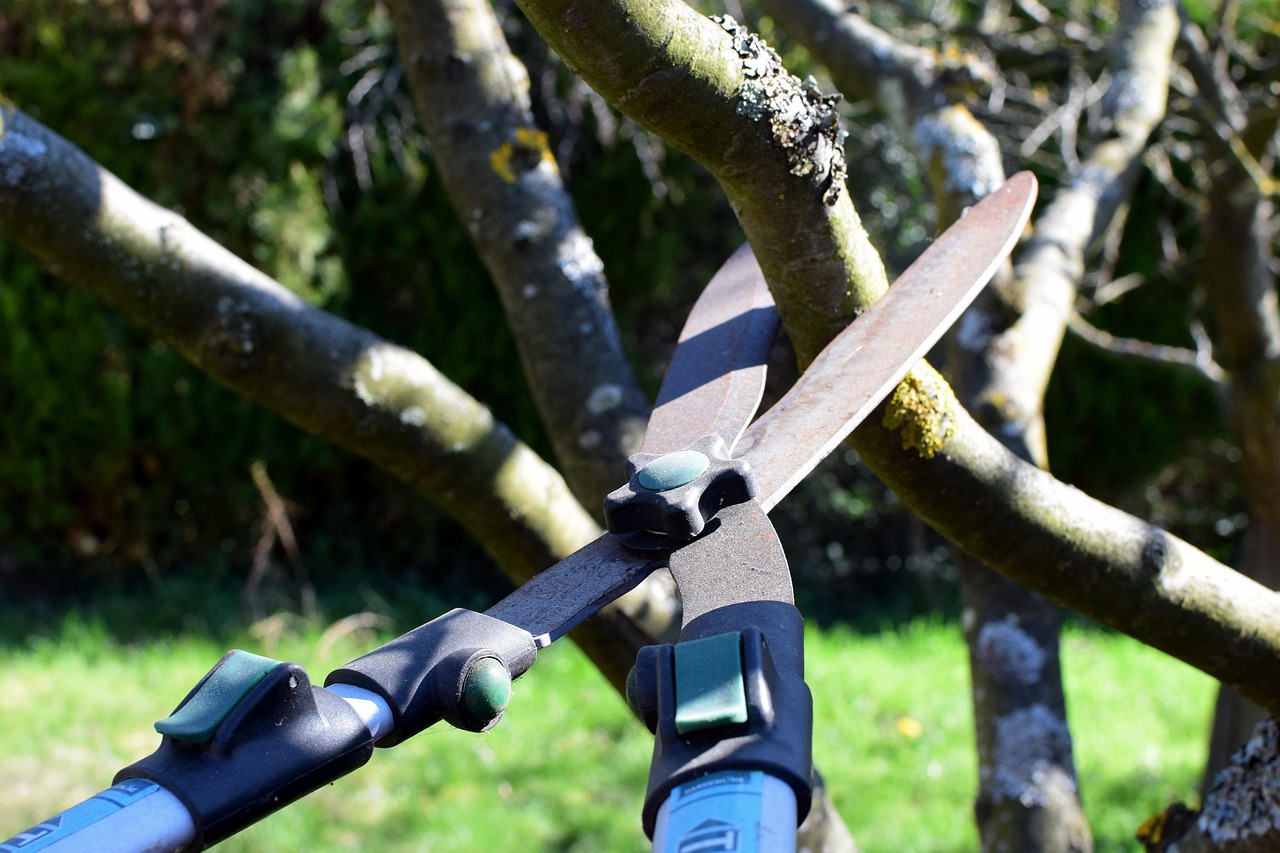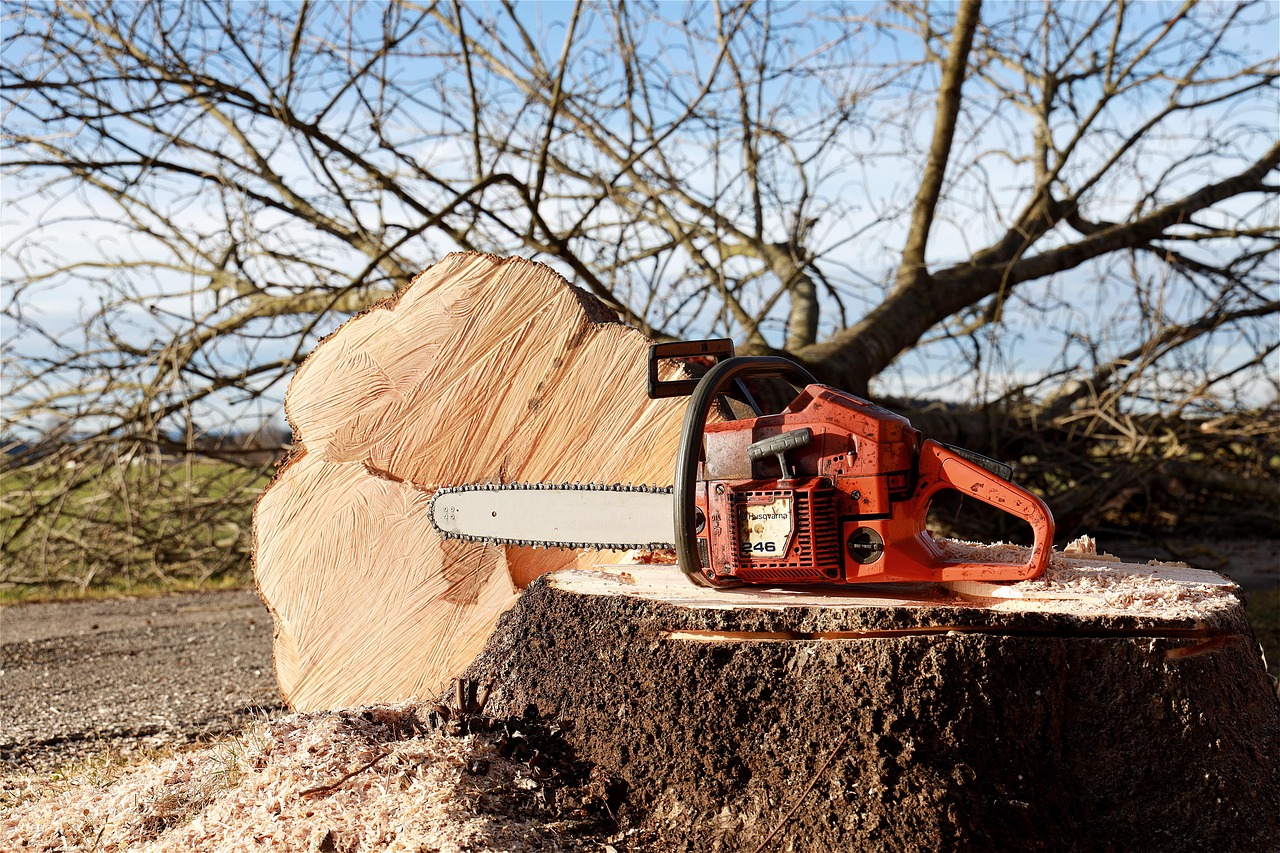To improve wind resistance in coastal trees, regular pruning is essential. Focus on removing weak branches, maintaining a balanced canopy, and ensuring proper airflow. This promotes stronger growth and reduces the likelihood of damage during storms.
Coastal environments present unique challenges for tree growth and stability. The constant exposure to strong winds, salt spray, and shifting soils can weaken trees, making them more vulnerable to damage. Pruning plays a vital role in enhancing a tree’s resilience against these factors. Properly pruned trees can withstand high winds better than those with dense or unbalanced canopies.

When considering pruning techniques, it’s important to understand the specific needs of coastal trees. Many species found in these areas, such as pines, oaks, and palms, have adapted to withstand harsh conditions. However, without proper care, they can still suffer from structural weaknesses. Regular maintenance not only improves their appearance but also fortifies them against environmental stressors.
Understanding the Importance of Pruning
Pruning is not just about aesthetics; it plays a critical role in the health and longevity of trees. Here are some key reasons why pruning is especially important for coastal trees:
- Structural Strength: Pruning helps remove weak or damaged branches, which can compromise the overall structure of the tree.
- Airflow Improvement: A well-pruned tree allows better airflow through its branches, reducing wind resistance and the risk of wind throw.
- Sunlight Access: Pruning helps ensure all parts of the tree receive adequate sunlight, promoting healthy growth.
- Pest and Disease Control: Removing dead or diseased wood can prevent pests and diseases from spreading.
By focusing on these aspects, you can enhance your tree’s ability to withstand strong coastal winds while maintaining its health and beauty. Understanding how wind affects trees is crucial in developing effective pruning strategies.

How Wind Affects Trees
Wind exerts significant forces on trees, especially in coastal regions where gusts can be intense. The impact of wind is influenced by various factors:
| Factor | Description |
|---|---|
| Tree Height | Taller trees are more susceptible to wind damage due to their increased exposure. |
| Crown Shape | A tree with a dense crown may experience more drag, increasing the risk of limb failure. |
| Soil Conditions | Poorly drained or loose soils can lead to instability and make trees more prone to uprooting. |
| Wind Direction | Trees that consistently face prevailing winds may develop asymmetrical growth patterns, leading to vulnerabilities. |
Understanding these factors can guide proper pruning techniques. For example, trees with asymmetrical growth may require corrective pruning to balance their structure. This not only enhances their appearance but also minimizes the potential for wind damage.
Pruning Techniques for Coastal Trees
When pruning coastal trees, several techniques can be beneficial. Each method serves a specific purpose in promoting wind resistance:

Crown Thinning
This technique involves selectively removing branches from the crown of the tree. It reduces density and allows wind to pass through more easily, decreasing the overall wind load on the tree.
Crown Raising
Crown raising involves removing lower branches to increase clearance from the ground. This technique can help prevent damage from salt spray and improve airflow around the trunk.
Crown Reduction
Crown reduction maintains the tree’s height while reducing its overall size. This is particularly useful for trees that may pose a risk to nearby structures or power lines.

Removing Dead or Weak Branches
Regularly checking for and removing dead or weak branches strengthens the tree. This practice prevents these branches from becoming hazards during storms.
Utilizing these techniques appropriately will ensure that your coastal trees are not only healthier but also better equipped to withstand the harsh conditions they face. Proper timing is also essential; the best time to prune most coastal trees is during their dormant season, typically late winter or early spring.
Continued education about specific tree species and their needs will further enhance your ability to effectively manage coastal trees. By implementing these practices, you contribute to a safer and healthier coastal landscape.
Choosing the Right Tools for Pruning
Choosing the appropriate tools for tree pruning is crucial for ensuring effective and safe practices. The right tools not only make the job easier but also minimize damage to the tree. Here are some essential tools for pruning coastal trees:
- Hand Pruners: Ideal for smaller branches, hand pruners allow for precise cuts and help maintain the health of the tree.
- Loppers: These are used for thicker branches that are too large for hand pruners. Loppers provide better leverage and reach.
- Pruning Saw: A pruning saw is essential for cutting larger limbs. Its design allows for clean cuts, which helps in faster healing.
- Pole Pruner: For high branches, a pole pruner can extend your reach without requiring a ladder. This tool is especially useful for tall coastal trees.
- Safety Gear: Always wear protective gear, including gloves, goggles, and a hard hat, to ensure safety while pruning.
Using sharp tools is imperative. Dull blades can crush branches rather than making clean cuts, which increases the risk of disease and pests entering the tree. Regularly sharpen your tools to maintain their effectiveness.
Timing Your Pruning Activities
The timing of your pruning activities can greatly influence the health and resilience of coastal trees. Here are some factors to consider when determining the best time to prune:
Seasonal Considerations
Most coastal trees benefit from pruning during their dormant season, which typically occurs in late winter to early spring. Pruning during this time has several advantages:
- Reduced Stress: Trees experience less stress when pruned during dormancy, allowing them to recover quickly.
- Improved Visibility: Without leaves, it is easier to see the tree’s structure and identify areas that need attention.
- Less Risk of Disease: Many pests and diseases are less active in colder months, reducing the risk of infection from pruning cuts.
Specific Weather Conditions
Avoid pruning during wet or windy conditions. Wet weather can promote the spread of fungal infections, while strong winds can create hazards during the pruning process. Always check the weather forecast before scheduling your pruning activities.
Common Mistakes to Avoid When Pruning
Even experienced gardeners can make mistakes when pruning. Being aware of common pitfalls can help improve your techniques and outcomes:
- Over-Pruning: Removing too much foliage can weaken a tree. Aim to prune only 20-30% of a tree’s canopy at one time.
- Incorrect Cutting Techniques: Make sure to cut at the right angle and just above a bud or branch collar to encourage healthy growth.
- Ignoring Tree Species Needs: Different species have unique requirements. Research specific needs before proceeding with pruning.
- Failure to Clean Tools: Always disinfect your tools between cuts, especially when moving between trees, to prevent disease transmission.
Encouraging Healthy Growth Post-Pruning
After pruning, it’s important to encourage healthy growth in coastal trees. Several practices can help support recovery and promote resilience:
Watering and Nutrient Management
Proper watering and nutrient management are vital following pruning. Here are some tips:
- Water Deeply: Ensure that trees receive adequate water during dry periods to help them recover from pruning stress.
- Fertilization: Use a balanced fertilizer in early spring to provide essential nutrients for new growth.
- Avoid Over-Fertilizing: Too much fertilizer can harm trees. Follow recommended guidelines based on the tree species and soil conditions.
Pest and Disease Monitoring
After pruning, keep an eye out for signs of pests or diseases, as stressed trees may be more vulnerable. Regular inspections can help catch issues early. Look for:
- Discoloration or wilting leaves.
- Unusual growths or lesions on the trunk or branches.
- Pest activity, such as holes in leaves or visible insects.
If you notice any issues, consult with a local arborist or extension service to identify appropriate treatments.
The Role of Local Climate in Pruning Decisions
The local climate plays a significant role in how and when you prune coastal trees. Coastal areas often experience unique weather patterns that can affect tree health. Here are some considerations:
- Salt Exposure: Salt spray can damage leaves and bark. Pruning can help manage salt damage by improving airflow and reducing stress on vulnerable areas.
- Humidity Levels: High humidity can lead to fungal growth. Ensure proper spacing between branches during pruning to promote air circulation.
- Temperature Extremes: Coastal regions may experience rapid temperature changes. Timing your pruning to avoid late frosts is crucial for protecting new growth.
By considering these climatic factors along with proper pruning techniques, you can enhance the resilience of your coastal trees while promoting their overall health and longevity.
Identifying Tree Species Commonly Found in Coastal Areas
Understanding the specific tree species that thrive in coastal environments is essential for effective pruning. Different species have unique growth habits, vulnerabilities, and needs. Here are some commonly found coastal tree species:
- Live Oak (Quercus virginiana): Known for its sprawling branches, this tree can withstand strong winds but requires careful pruning to maintain structure.
- Eastern Red Cedar (Juniperus virginiana): This hardy tree offers excellent windbreaks and is resistant to salt spray. Pruning helps maintain its shape and health.
- Pine Trees (Pinus spp.): Various pine species grow along coastlines. Regular pruning helps prevent breakage and encourages strong growth patterns.
- Palms (Arecaceae family): Coastal palms can be susceptible to wind damage. Pruning dead fronds promotes better airflow and reduces risk.
- Magnolia (Magnolia grandiflora): This tree can grow tall and wide. Pruning is necessary to control its size and maintain stability.
Each of these species has specific requirements regarding growth patterns and ideal pruning techniques. Researching the characteristics of the trees in your area will aid in developing effective pruning strategies.
Pruning Techniques by Tree Species
Different tree species require tailored pruning methods to address their unique structures and growth behaviors. The following sections outline specific pruning techniques suitable for common coastal tree species.
Pruning Live Oaks
Live oaks benefit from selective pruning to enhance their natural beauty while ensuring they are wind-resistant. Key practices include:
- Remove Deadwood: Regularly check for and remove any dead or dying branches to promote overall health.
- Thin Inner Branches: Thinning the interior of the canopy allows for better airflow and sunlight penetration.
- Maintain Structural Integrity: Focus on preserving the central leader while removing competing branches to avoid structural weaknesses.
Pruning Eastern Red Cedars
This species is relatively low maintenance but can benefit from careful pruning:
- Avoid Heavy Pruning: Minimal pruning is recommended to maintain its natural shape while promoting healthy growth.
- Remove Lower Branches: Cleaning up lower branches can help reduce salt damage from ground spray and improve airflow.
Pruning Pine Trees
Pines have a unique growth habit that requires different approaches:
- Prune in Late Winter: This is the ideal time to remove dead or weak branches before the new growth begins.
- Crown Thinning: Thinning out crowded branches improves airflow and reduces stress during storms.
- Avoid Topping: Topping a pine can lead to multiple weak branches that are vulnerable to wind damage.
Pruning Palms
Palms require specific techniques to ensure they remain healthy and resilient:
- Remove Dead Fronds: Cutting away dead or yellowing fronds helps direct nutrients to healthier parts of the tree.
- Avoid Cutting Green Fronds: Retaining green fronds is crucial as they contribute to water and nutrient absorption.
Pruning Magnolias
The majestic magnolia needs careful attention when pruned:
- Selectively Remove Crowded Growth: Focus on removing branches that cross or rub against each other to improve structure.
- Limit Height Increase: If the tree grows too tall, consider crown reduction techniques to maintain a manageable size.
The Benefits of Professional Pruning Services
If you are unsure about your pruning abilities or if your trees are large or complex, hiring a professional arborist can be beneficial. Here are some advantages of using professional services:
- Expert Knowledge: Arborists have training in tree biology and health, which ensures proper techniques are used for each species.
- Safety Considerations: Professionals are equipped with safety gear and equipment, reducing the risk of accidents during pruning.
- Efficient Work: Professional arborists can complete the job more quickly and effectively, leading to better outcomes for the trees.
- Long-Term Health Monitoring: Many arborists offer ongoing maintenance services, allowing for long-term health management of your trees.
Understanding Local Regulations and Guidelines
Before undertaking any significant pruning work, it is essential to familiarize yourself with local regulations regarding tree care. Some communities have specific guidelines that govern tree pruning, particularly for protected species. Here are some points to consider:
- Permits Required: Depending on your location, you may need a permit for pruning certain trees, especially those categorized as protected species.
- Best Practices Guidelines: Local extension services may provide guidelines on best practices for tree pruning that align with community standards.
- Environmental Considerations: Be aware of wildlife habitats; some trees may house nesting birds during certain seasons, which could restrict when you can prune.
By adhering to local regulations and understanding community guidelines, you can ensure that your tree care efforts are compliant and beneficial to the environment.
The Role of Community in Coastal Tree Care
Caring for coastal trees is not just an individual responsibility; it often requires community involvement. Participating in local initiatives can enhance tree health across neighborhoods. Here are some ways communities can contribute:
- Community Workshops: Organizing workshops on tree care and maintenance can educate residents about proper techniques and the importance of coastal trees.
- Tree Planting Events: Engaging local residents in planting new trees helps expand green spaces while promoting community pride.
- Civic Engagement: Collaborating with local government and conservation groups can foster support for preserving and caring for coastal ecosystems.
By fostering a culture of community engagement around tree care, you contribute to a healthier coastal environment while encouraging others to take part in these important efforts.
Maintaining Coastal Trees Year-Round
Maintaining coastal trees requires ongoing attention beyond just pruning. Throughout the year, various practices can enhance tree health and resilience against wind and other environmental stressors. Here are key maintenance tips to consider:
Seasonal Care Practices
Different seasons bring unique challenges and opportunities for tree care. Understanding these seasonal changes can help you provide the best care possible for your coastal trees.
- Spring: As trees begin to grow, focus on monitoring new growth and applying fertilizer if necessary. This is also an ideal time to perform light pruning to shape the trees and remove any dead or damaged limbs.
- Summer: Ensure trees receive adequate water, especially during hot spells. Mulching around the base can help retain moisture and regulate soil temperature.
- Fall: This season is perfect for assessing tree health and preparing for winter. Consider additional pruning to remove any weak branches that may pose a risk during storms.
- Winter: During dormancy, conduct major pruning activities. This is also a good time to inspect trees for signs of pests or diseases that may have developed over the warmer months.
Soil Health and Fertility
The health of the soil where coastal trees grow directly impacts their resilience. Healthy soil provides essential nutrients and aids in water retention. Here are some steps to promote soil health:
- Soil Testing: Regularly test the soil to determine nutrient levels and pH balance. This information can guide you in choosing appropriate fertilizers.
- Organic Matter: Incorporate organic matter, such as compost or well-rotted manure, to improve soil structure and fertility.
- Aeration: Aerating the soil around tree roots can enhance water infiltration and root growth, which is vital for overall tree health.
Community Involvement in Coastal Tree Health
Encouraging community involvement is crucial for caring for coastal trees. When communities come together, they can make significant strides in maintaining healthy ecosystems. Here are additional ways to enhance community engagement:
- Tree Adoption Programs: Encourage individuals or families to adopt a tree in their neighborhood. This fosters accountability and encourages regular maintenance.
- Educational Outreach: Schools and local organizations can collaborate on educational programs that teach students about the importance of trees in coastal environments.
- Volunteer Days: Organizing volunteer days for tree planting, pruning, and cleanup can strengthen community bonds while helping the environment.
Utilizing Technology in Tree Care
Modern technology can play a significant role in enhancing tree care practices. Here are some examples of how technology can assist in maintaining coastal trees:
- Drones: Drones can be used for aerial assessments of tree health, allowing arborists to identify issues that may not be visible from the ground.
- Mobile Apps: Various apps are available that help track tree care activities, remind you of maintenance schedules, and provide information on local tree species.
- Sensors: Soil moisture sensors can provide real-time data about soil conditions, helping ensure that trees receive adequate water during dry spells.
Final Thoughts
Caring for coastal trees is a multifaceted endeavor that requires knowledge, commitment, and community involvement. By understanding the specific needs of different tree species and employing effective pruning techniques, you can significantly enhance their wind resistance and overall health. Regular maintenance throughout the year—coupled with community engagement—ensures that these vital trees thrive in their challenging environments.
The importance of coastal trees extends beyond aesthetics; they provide critical ecosystem services such as habitat for wildlife, protection against erosion, and enhanced air quality. By prioritizing their care, not only do we improve their resilience but we also contribute to healthier coastal ecosystems.
As you embark on your journey to care for coastal trees, remember that education is key. Stay informed about best practices, local regulations, and technological advancements that can aid in your efforts. Together with your community, you can make a lasting impact on the landscape, ensuring that coastal trees continue to flourish for generations to come.
